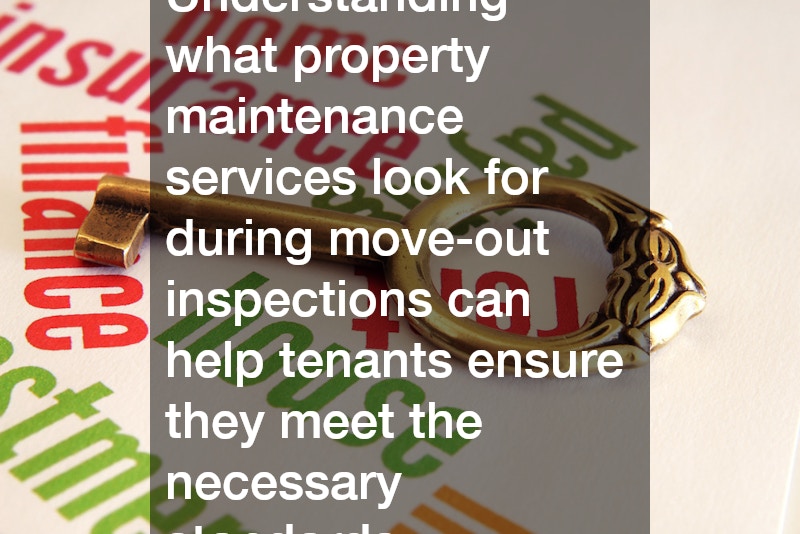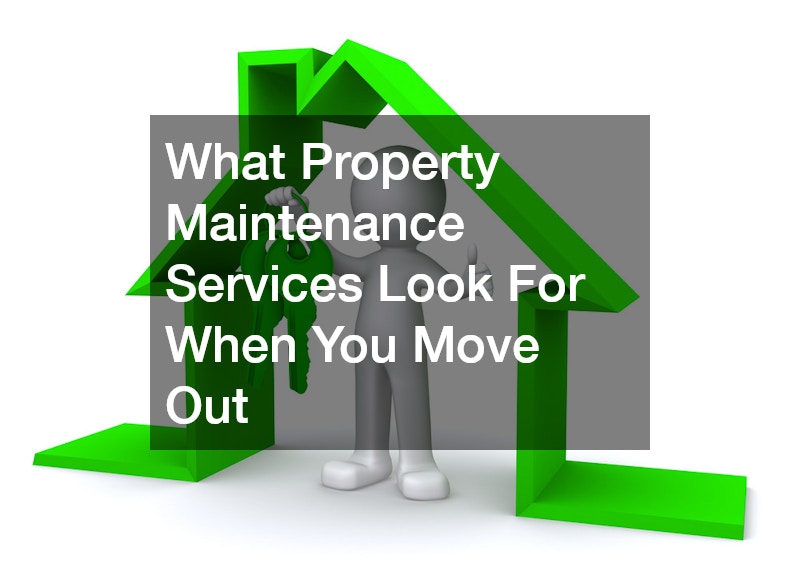
This article discusses what property maintenance services typically assess when a tenant moves out of a rental property. It provides insight into their primary concerns and common reasons for security deposit deductions. By understanding these assessment criteria, tenants can better prepare for the move-out process and increase their chances of receiving a full deposit refund.
How Do Property Maintenance Services Assess Damage?
1. Surface and Structural Inspection
Property maintenance services conduct a thorough inspection of all visible surfaces and structural components. They focus on walls, flooring, and ceilings to detect any signs of damage like dents, holes, or scratches. Such issues often lead to repairs, which can result in deductions from the security deposit.
Beyond the surface level, these inspections aim to uncover deeper structural problems that may not be immediately visible. Areas commonly examined include ceiling integrity and flooring conditions beneath carpets or tiles. These aspects are crucial as they could indicate larger issues that need addressing before a new tenant moves in.
Damage evaluations often include the use of specialized tools to assess structural integrity more effectively. This level of detail ensures that both surface and hidden damage are accounted for. Tenants are advised to repair minor damages beforehand to avoid any surprises during the inspection.
2. Check on Appliance Functionality
Inspection of all household appliances is a standard procedure during the move-out process. Property maintenance services focus on ensuring that items like refrigerators, ovens, and dishwashers are functioning correctly. Malfunctioning appliances can significantly affect the next tenant’s experience and result in costly repairs.
Functionality checks may involve turning on each appliance to verify its operational status. Inspectors listen for unusual sounds and look for physical damage or missing components. Any inconsistency might indicate further internal issues requiring professional attention.
Having a record of appliance maintenance during the lease period can be advantageous for tenants. Regular upkeep can prevent wear and tear from escalating into significant problems. Such practices contribute positively to retaining the security deposit.
3. Plumbing and Electrical System Evaluation
Property maintenance services place significant importance on evaluating plumbing and electrical systems. Inspectors check for leaks, water pressure issues, and drain blockages to ensure the plumbing is in good condition. Electrical assessments focus on identifying exposed wiring, faulty outlets, or lighting that fails to operate correctly.
Issues in these areas can pose severe safety hazards and consequently, incur higher repair costs. Inspectors often look beyond visible signs and use diagnostic tools to detect hidden issues within these systems. Ensuring the safety and functionality of these essential systems is paramount for maintaining property standards.
What Cleanliness Standards Do Property Maintenance Services Expect?
1. Kitchen and Bathroom Sanitation
Kitchens and bathrooms are scrutinized for cleanliness during move-out inspections due to their high hygiene importance. Surfaces in these areas should be free of stains, mold, and grime. Maintenance services often prioritize this as it directly affects the living environment’s health.
Cleaning agents and disinfectants should be used to sanitize countertops, sinks, and appliances. Special attention is given to difficult-to-clean areas such as grout lines and behind appliances. Failure to clean thoroughly may lead to deductions to cover professional cleaning services.
2. Carpet and Flooring Condition
Carpet and flooring conditions critically affect the overall impression of a property during inspections. Carpets should be vacuumed to remove dirt and be free of stains, while hard flooring needs to be swept and mopped. Property maintenance services look for signs of wear and tear that might require more intense cleaning or repair.
Distinguishing between normal wear and tenant-caused damage is crucial. Inspectors may even look for lingering odors, which indicates that more thorough cleaning, such as professional steam cleaning, might be necessary. These observations are included in the final report, determining if the tenant shoulders any cleaning expenses.
3. Outdoor Areas and Windows
Property maintenance services also evaluate outdoor spaces like balconies, gardens, and the state of windows. These areas must be free of debris, and plants should be trimmed and maintained to create an inviting space. Clean windows allow maximum light passage, positively influencing the inspection outcome.
Balconies should not exhibit signs of neglect such as clutter or plant overgrowth. Similarly, gardens must appear tamed, reflecting ongoing maintenance rather than last-minute efforts. Windows are inspected for cleanliness since dirt and grime can significantly reduce natural light and aesthetic appeal.
Understanding what property maintenance services look for during move-out inspections can help tenants ensure they meet the necessary standards, thus securing their security deposit. Focusing on aspects like damage assessment, appliance functionality checks, and cleanliness standards can significantly impact the inspection results. Preparing for these key areas allows tenants to effectively prepare for a smooth transition, ensuring a positive end to their rental experience.
.


